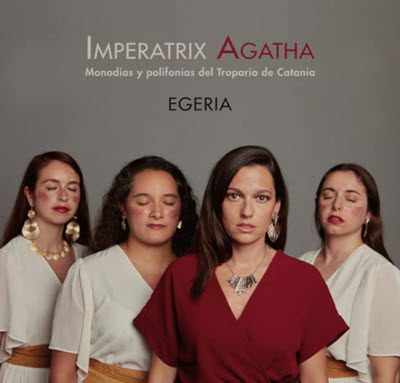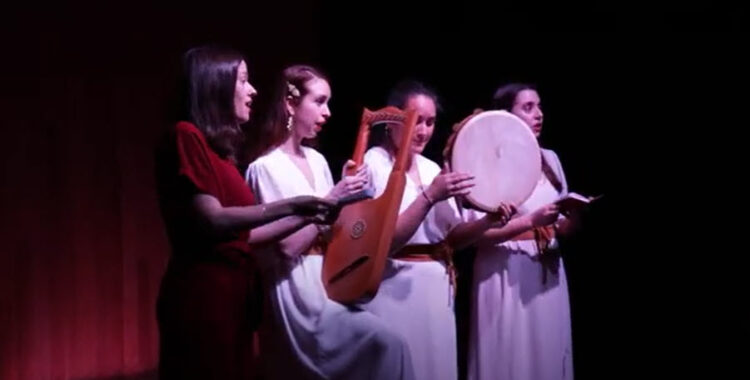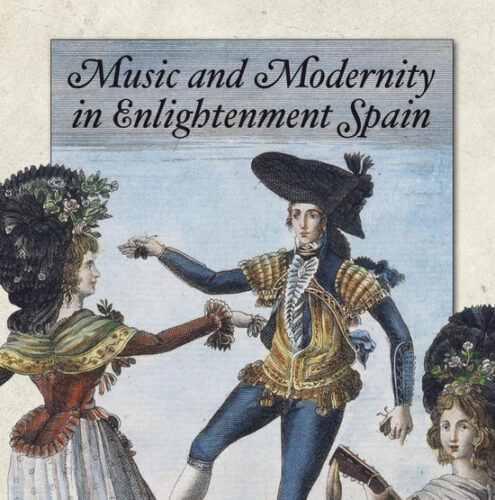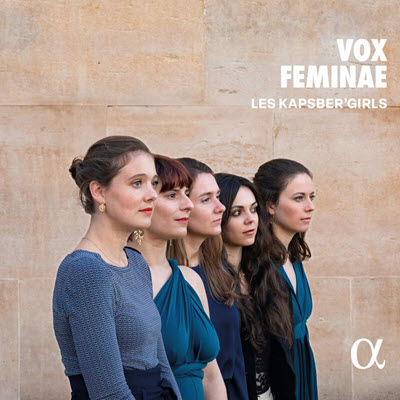by Karen M. Cook
Published May 20, 2024
Imperatrix Agatha: Monodias y polifonías del Tropario de Catania. Egeria vocal ensemble. Lindoro NL 3063
For a number of years, the ensemble Egeria has been a major presence at myriad European music festivals, where they have focused primarily on the main musical traditions of their home country of Spain. On this, their debut album, they break new ground — and in several intriguing ways. Here, they have shifted away from the comforts of home, at least in a manner of speaking; the main focus of the album is on a manuscript that, yes, is now held in Spain, but which originated in 12th-century Norman Sicily.

Moreover, they break away from a more or less verbatim presentation of the “notes on a page,” instead favoring an improvisatory approach to performance practice. In working through the improvisatory practices of medieval Europe, as singers and instrumentalists, they have added drones, harmonizations, and florid embellishments to the otherwise monophonic repertory. (The physical CD is available as a Spanish import, although the album is available on Apple Classical, SoundCloud, Spotify, and other streaming services.)
The album centers on the Tropario de Catania, one of three manuscripts left to us from 12th-century Sicily, a hotbed of cultural interaction between Greece, the Middle East, the Romans, the Byzantine empire, and other Western European populations. It is a compilation of works written for the Cathedral of St. Agatha in the city of Catania, a snapshot of the church’s musical life, and thus while many of its works are dedicated to her, others are for other saints, feasts, and purposes.
From this trove the ensemble has selected 12 works that they feel exemplify a “Sicilian” style: 10 sequences, an Easter responsory, and a Benedicamus Domino. Three of these, including the Benedicamus, were already set polyphonically in the original manuscript, while the other nine exhibit the group’s approach to improvisatory polyphony.
Take, for example, the opening track: Regia diva, a sequence for Saint John. Each of the four vocalists takes a portion of the sequence as a soloist, all the while accompanied by the plucked lyre, but when the ensemble comes together, some voices might create a drone or sustained pitch against a more florid melody, or move in parallel fifths. At the very end, though, they break into three-part harmony to set up a beautiful final cadence.
In the second track, Christi baptista, they again alternate between the monophonic chant and newly created harmonies, although here they focus more on drones and the crunches created by oblique motion. Other tracks, such as Nunc Christi familia, experiment with a more complex approach to constructing a harmonized voice, exploiting different kinds of contrapuntal motion to highlight or even obfuscate the original chant. Stylistically, it’s in the same vein as Ave virgo singularis, one of the works originally documented in polyphony and a real highlight of the album, as is Laudes deo devotas with its gentle sway.

While most of the time it’s possible to trace the original chant through the ensemble’s various embellishments, I would have also enjoyed hearing more of the chant as originally notated, then again with the various polyphonic additions, so I could get a better sense of how the ensemble was interacting with the original material.
If such would benefit other listeners, it would be interesting to compare approaches to the same repertory by ensembles such as Al Qantarah, or to have handy David Hiley’s transcription of the manuscript.
Overall, though, the works are sung beautifully, and there’s a really engaging sense of casual mastery here. As debut albums go, this one certainly makes its mark. I look forward to hearing more from them.
Karen M. Cook is Associate Professor of Music History at the University of Hartford. She specializes in late medieval music theory and notation, focusing on developments in rhythmic duration. She also maintains a primary interest in musical medievalism in contemporary media, particularly in video games. For EMA, she recently reviewed the earliest known Song of Solomon setting.




